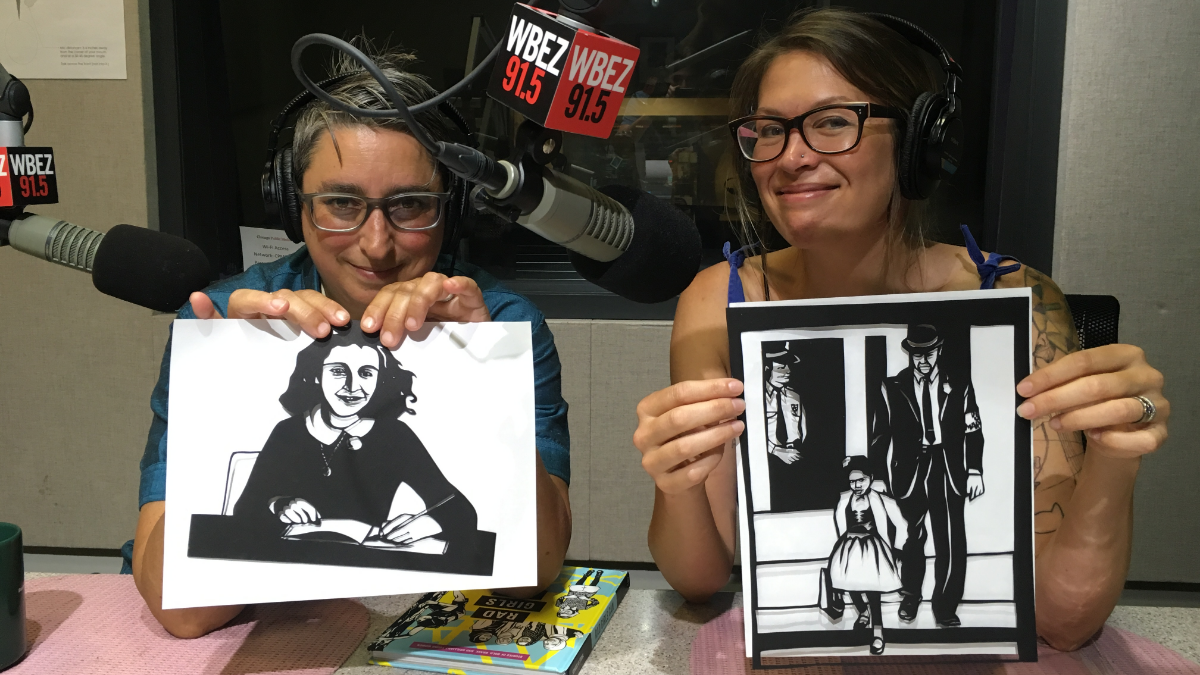Rad Girls Who Changed The World
By Greta Johnsen

Rad Girls Who Changed The World
By Greta JohnsenThese days there are more and more celebrations of women who might have otherwise been relegated to the footnotes of history.
They’re finally getting their own books, movies and streets named after them.
And here at Nerdette, we’re all about that. Totally into it. Zero complaints.
But what is equally as wonderful is when the spotlight also lands on accomplished young women. And that’s what author Kate Schatz and illustrator Miriam Klein Stahl have done with their book Rad Girls Can, which tells the stories of inspiring young women who have made positive impacts on the world before turning 20.
Below are three of Schatz and Stahl’s favorite stories from Rad Girls Can.
Ruby Bridges
Miriam Klein Stahl: I’m sitting here looking at a paper cut of Ruby Bridges, and that’s definitely one of my favorite stories in the book.
Greta Johnsen: Ruby Bridges being one of the first African American girls to go to integrated school after the Brown v. Board of Education decision.
Stahl: She walked by those hateful parents every day, spitting on her, taunting her, didn’t miss one day of school. And just that persistence and to be so young and strive for education in that way against …
Johnsen: … Adults, I mean, that’s the thing…
Stahl: Adults throwing so much hate her way. I just think it’s absolutely incredible and inspiring. And it gives hope and inspiration when there’s political strife to keep going, and to have your vision, and work towards it even if it’s really hard and people are really mean.

Mary-Pat Hector
Kate Schatz: Mary-Pat Hector was a college student at Spelman University in Georgia. She was 19 years old, and decided to run for city council in Stonecrest, Georgia. And she was excited to run, she had years of experience as an activist and a leader working in her community.
And when she submitted her paperwork to run for council, she was immediately challenged by an older white man who was also running for the seat who argued that she was too young to run, and felt that was inappropriate, [that] she shouldn’t run. He wrote this whole letter about it, and so they held a special session. She showed up with her family and all her supporters. They actually decided unanimously that she should run.
Greta Johnsen: There’s a victory.
Schatz: Yup, there’s a victory. And then she launched this great campaign. Her whole staff was all college students and they knocked on doors. She ran a great campaign, and she didn’t win.
But the other cool victory in the story is that there was a state legislator in Georgia who heard about this and realized that the required age for running for office was different in counties all over the state and actually ended up passing legislation to make it legal to run for office when you’re 18, in any part of the state.
I love that story because it’s a small little example of this different victory that no one would’ve anticipated.
Amandla Stenberg
Kate Schatz: I wanted to include someone who was more of a celebrity, and in particular, someone who’s been using social media in a really powerful way. She also has been really outspoken about race, about cultural appropriation, and also about gender and sexuality in this way that’s pretty striking. And so we write in the story about how she really had to make a decision of should she continue to speak up about these things as a teenager. Was she risking her career?
Johnsen: Right, because she was cast [in The Hunger Games] when she was 11. The reaction to casting a girl of color in this role was just insane. Fans of The Hunger Games who also happened to be racist were extremely angry that Rue was played by someone who wasn’t a white girl essentially.
Schatz: Yeah, despite the fact that in The Hunger Games it’s actually really specified that Rue had dark skin, she had dark hair. And yeah, people freaked out. And she’s talked about how that was really her first direct experience with racism and that kind of hate.
But she really made a decision as a teenager to use her platform to speak up. That’s an aspect of culture that maybe isn’t going to pop up in a lot history books: you know, the young celebrity and how they’re using Instagram. But I wanted to put it in this book.
This interview has been edited for brevity and clarity. Click the “play” button to listen to the entire conversation, which was produced and adapted for the web by Bia Medious.
